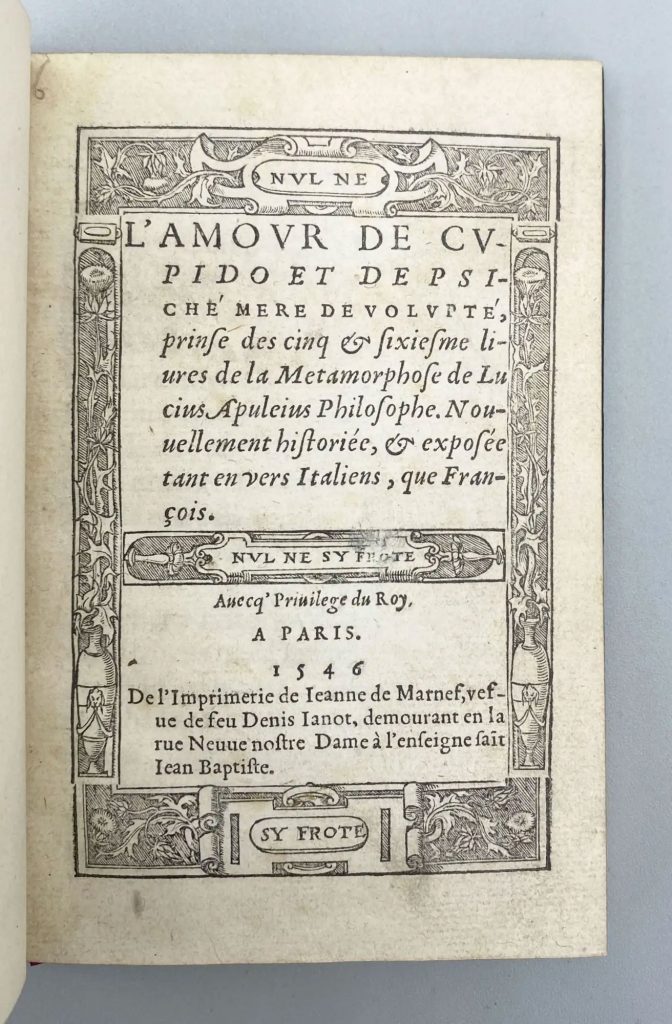Search for books, articles, and more
One of the prettiest books published in 16th-century Paris

Apuleius. L’amovr de Cvpido et de Psiché, mere de volvpté, prinse des cinq & sixiesme liures de la Metamorphose de Lucius Apuleius, philosophe, nouuellement historiée & exposée tant en vers italiens que françois. Edited by Jean Maugin. First edition. Paris: Jeanne de Marnef, 15 September 1546. 32 text woodcuts.
Submitted for adoption by Mack Zalin, PhD
The tale of Cupid and Psyche comes from the Metamorphoses, written in the 2nd century AD by Lucius Apuleius. This French adaptation was edited by Jean Maugin (fl. 1545-66), who supplied the preliminary and concluding verses. The printer, Jeanne de Marnef (b. 1509), ran the business of her late husband, Denis Janot, from late 1544 to late 1546. In this narrow window, Marnef produced some superbly beautiful books illustrated in the new French style. Here, she placed the Italian texts below the cuts, subservient, while the facing French poetry proudly stands alone.
Once described as “one of the prettiest books published in Paris in the 16th century,” this edition of Apuleius’ classic story also served artists as a pattern book. The woodcuts have their genesis in Raphael’s frescoes of Cupid and Psyche in the Villa Farnesina (completed 1518). In the early 1530s, the Flemish artist Michel Coxie (1499-1592) added twenty earthly scenes, creating a suite of thirty-two drawings. Shortly after, the Italian engraver and printmaker known as the Master of the Die (fl. 1525–1560) cut these in copper above anonymous Italian verse.


